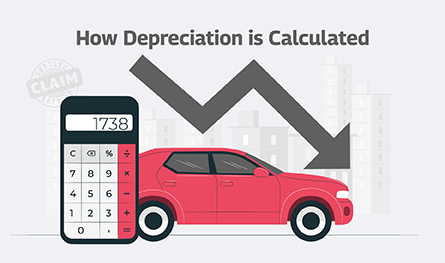Non-Linked and Non-Participating Term Insurance Plans

Non-linked, non-participating term plans are the ones that do not participate in the business and profit of the insurance company. These are fixed premium plans where the policyholder pays a fixed amount to ascertain a guaranteed sum as a return to be paid to the nominee in case of his/ her demise. Let’s learn more in this post.

So, if you are willing to get a term insurance cover, it is important to know and understand the various types of plans offered under term policies so that a decisive decision can be made by you.
So, let’s find out what is a non-linked non-participating term insurance plan and other related details in this post.
What Does Non Linked Insurance Plan Mean?
As suggested by the name itself, a non linked insurance plan is a term policy that is not linked or related to the market performance of the insurance company from whom you buy the plan. So, in the other word, the policy and the benefits received from it will not be affected by the business or performance of the insurer. The nominee of the policyholder will simply receive the fixed benefit as per the conditions of the policy if there is any unfortunate situation like demise of the insured.
Generally, all the Term Insurance Policies are non-linked or not related to market fluctuations because they are not connected with the business of the insurer in the market. Hence, they are termed as low-risk plans and suit people with low-risk appetite.
What Does Non-Participating Term Plans Mean?
All insurance companies offer non-participating term plans, also termed as non-par plans. But, do you know what they mean? Well, these are policies under which the policyholder doesn’t participate in the market performance or profit of the company/insurer. In other words, the policyholder in such plans would not receive any bonus or extra profit other than the pre-decided or fixed maturity at the time of buying the plan.
As such under pure term plans, there is no maturity benefit offered to the insured if the person outlives the plan and hence, these policies do not provide any bonuses too. That is why, most of the traditional term policies are regarded as non-participating policies.
So, if the insurer does exceptionally well in terms of profits, you can’t make any claims of benefits or bonuses. Likewise, if the insurer goes into severe losses, you will still not be impacted and will receive the benefit claim as per your policy term.
Non-Linked and Non-Participating Term Insurance Plan- Features
As discussed above, the non linked insurance plan and non-participating term policies are the ones which the insured buy for a fixed duration. Here, if the policyholder dies within the policy term, the nominee receives a fixed death benefit. Below are some common characteristics of a non-linked and non-participating term insurance plans:
1. Not influenced by the market fluctuations – We already discussed above that the term policies are not related to the market or business of the insurer as well as they are non-participating policies. Thus, the plan has nothing to do with the insurance company’s performance and benefits.
Being Non linked insurance plan, they do not in any way affected by the performance of the market. Similarly, being non-par, these policies do not contribute in the profits or losses of the insurer. Hence, they are eligible only for the fixed return (death benefit) promised by the insurer and no additional benefit.
2. Allow the policyholder to gain a Fixed Return – Since the term plans have nothing to do with the market fluctuations of the insurer, the nominee of the insurance plan is sure to get guaranteed return in the form of death benefit in case of demise of the policyholder during the term of the plan.
3. Available at reasonable premium – Being non linked insurance plan and non-participating plans, term policies are available at an affordable premium price and can easily be afforded by common people. Hence, these policies are popular among the masses.
4. Term plans are low-risk products – The risk factor in terms of returns in any investment comes when the plan is market -linked. The greater the policy is connected to the market, the higher is the risk factor. However, since term plans are non linked insurance plan as well as non-par policies, they are safe from market instability and are low risk policies. It is meant for investors who are simply looking at life cover to secure family members in their absence.
Who Should Opt for a Non-Linked and Non-Participating Term Insurance Plan?
A non-linked non-participating term insurance plan can be availed by anyone. But it especially suits the ones who are looking for simple life cover. These are low risk plans available at low premiums. The only aim to buy such plans is to receive higher life cover if anything happens to the insured during the term of the policy.
These plans are not at all risky, which makes them viable options for many and they fulfill the key expectations of policyholders.
FAQs on Non-Linked and Non-Participating Term Insurance Plans
A non-linked and non-participating group term life insurance plan is one that do not take part in the market-based businesses of the investment company. So, your investments under such plans are not influenced by the reputation or earning of the company in the market. All you need is to pay fixed premiums as pre-decided while buying the policy and receive assured returns.
Maximum Age of the Life Insured of non-linked non-participating endowment plan at maturity is 75 years for a Policy Term more than 10 years.
In case of participating policy, the policyholder gets a share of the profits earned by the insurance company in the form of bonuses or dividends. On the other hand, in case of non-participating life insurance plans, the profits of the insurance company are not shared and the policyholder doesn’t receive any dividends.
A Non-Participating Life Insurance plan is one where the policyholder does not get any extra benefits/bonuses/dividends earned by the insurance company at different time intervals.
These are traditional plans that are not related or linked to the market. These plans allow low-risk returns along with maturity benefits and bonuses. A Term Insurance plan or an endowment policy are some examples of non-linked insurance policies.

Author Bio
Paybima Team
Paybima is an Indian insurance aggregator on a mission to make insurance simple for people. Paybima is the Digital arm of the already established and trusted Mahindra Insurance Brokers Ltd., a reputed name in the insurance broking industry with 21 years of experience. Paybima promises you the easy-to-access online platform to buy insurance policies, and also extend their unrelented assistance with all your policy related queries and services.
Other Life Insurance Products
Latest Post
.jpg)
Having a bike is not just about convenience, it’s a huge responsibility. Financial protection of your two-wheeler is important and the best way to ensure that is to have a bike insurance policy that will protect you in case of an accident, theft or a natural calamity. There are so many options when it comes to policies, making it difficult to know what’s best. This guide makes it easier to choose the best bike insurance policy that is suitable for you.


Non-linked, non-participating term plans are the ones that do not participate in the business and profit of the insurance company. These are fixed premium plans where the policyholder pays a fixed amount to ascertain a guaranteed sum as a return to be paid to the nominee in case of his/ her demise. Let’s learn more in this post.


Car depreciation implies the difference between the cost of a car at the time of buying the car and when you sell it. A car insurance claim amount is determined by the car depreciation rate. The car depreciation rate is the reduction in the value of your car over its lifespan caused by wear and tear.


Have you ever caught yourself lost in illusions about your daughter's future events, such as her university convocation and first day at work? Her university convocation. When she embarks upon her initial job after graduation will be the day.

.png)
Accidents can happen anywhere, anytime, by your own fault or another person. What’s important is to be prepared for such mishaps. This is where Own Damage Car Insurance comes in handy.




